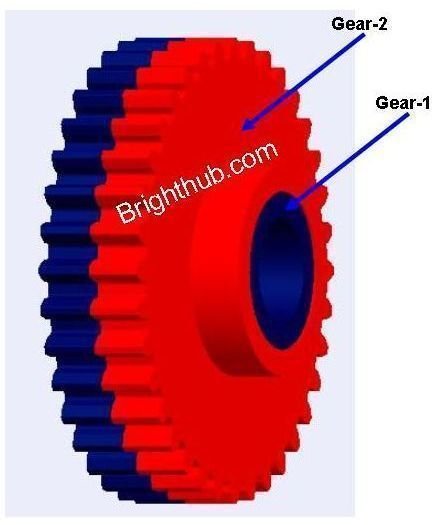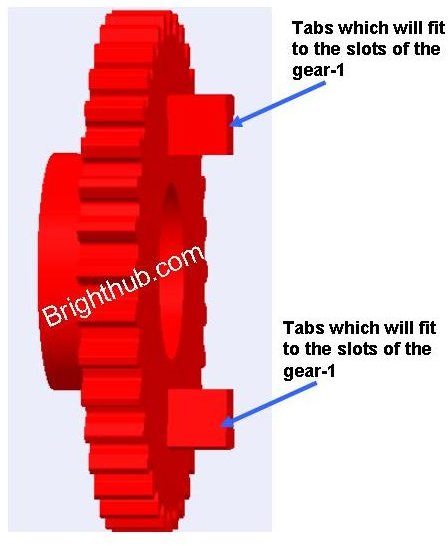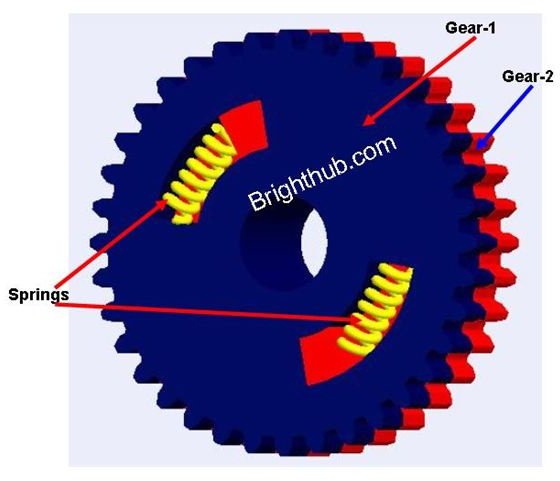Anti (Non) Backlash Spur Gear Techniques: Gear Backlash Prevention Method, Scissor Gear
What is Gear Backlash?
It is the clearance between two mating gears. Most of the gear train applications you see around are always contains certain amounts of backlash in it. For some of the application, gear backlash is helpful and thus kept intentionally and for some, it is not desired at all. The gear backlash prevention techniques or the anti backlash gear design techniques are useful for the second category of the gear train application.
Anti Backlash Gear Design Technique
Design engineers across the industry use different anti backlash gear design techniques, some of them are patented as well. We will discuss the spring loaded scissor gear technique here. I have created a conceptual ProE model for the purpose of explaining the technique:
- From the other side, the model will look like below:

- The whole assembly of the anti backlash gear is made up by four parts: Two gears and two compression springs.
- The gear -1 (shown in blue) is going to be rigidly inserted to the transmission shaft and the gear – 2 (shown in red) is going to be inserted over the extended hub of the gear-1 in such a way that the gear – 2 can rotate freely with respect to the gear-1.
- So, the joint between the gear-1 and gear-2 is like a bushing. See cross section view of the ProE model below to get a clear idea of what I am talking about:

- Now, let’s see the construction the individual gears. The gear-1 (blue) looks like below:

- And the construction of the gear-2 is like below:

- From the pictures above, you might already have understood that the tabs of the gear-2 will go into the slots of the gear-1 and partially fill it.
- After the tabs go into the slot, a compression spring is placed to the each slot.
- It is because of the spring, the backlash is absorbed by the gear assembly. How? Well, as you have already seen that the gear-2 can rotate freely about the axis of the gear-1, so, while in operation as soon as some amount of backlash is created in the system the spring pushes the free gear-2 to make up the backlash.
- One side of the mating gear teeth to the anti backlash gear is pressed by the teeth of the gear-1 and the other side is pressed by the teeth of the gear-2.
- The spring of the anti backlash gear should designed in such a way that the compression of the spring should not occur by the normal operating torque of the gear.
Conclusion
The picture of the ProE model shown here for explaining anti backlash gear design technique is tentative and a functional model of such gear backlash prevention method requires detail design and analysis further.
